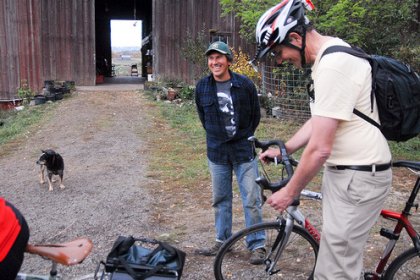
– Slideshow below –
(Photos © J. Maus)
A bureaucratic process related to Metro’s Urban Growth Boundary seems like an unlikely front for bike activists. Even more unlikely is that they’ve become allies with farmers.
“The thing you guys are doing here [riding bikes]… I see it every day. That is the beauty of being so close to the city. We have friends who bike from Portland to buy things from us.”
— Juvencio Arqueta, owner of
La Finquito del Buho CSA
But that’s what’s happening in rural Washington County, ever since county leaders submitted a proposal to put 34,000 acres of prime farming and bike riding country north of Highway 26 into Metro’s “urban reserves”. The County sees the land as prime territory for high-paying jobs, much like the ones at companies like Intel and Nike, local stalwarts on the other side of the highway that pump millions into the regional economy.
But a group of residents, bike enthusiasts, and farmers feel like this area is much more important than jobs and that developing it into parking lots and office buildings would be a big mistake.
Metro’s reserves process is a way for the agency to give counties a say in how the Urban Growth Boundary grows — or doesn’t — in the future. Land put into urban reserves gets put on track to be absorbed into the UGB, paving the way for commercial development. Land in rural reserves, on the other hand, is guaranteed to stay undeveloped for at least 40-50 years.
During a bike tour on Monday, regional policy makers learned that the land in this area is not just an amazing place to ride, it’s also home to numerous family farms growing a wide variety of crops.
Joining the ride were Metro Councilor Rex Burkholder, Washington County Commissioner Dick Schouten, Metro land use planning manger John Williams, Ingrid Nylen with Cycle Oregon, BTA Board Member Susan Otcenas, and others.
The ride was organized by bike event promoter and communications director of the Northwest Trail Alliance, Kris Schamp. After he heard about Washington County’s proposal, Schamp — who lives in Beaverton and knows several farmers in the Helvetia area — swung into action. He organized a ride last month to create awareness of this issue. Schamp originally hails from the Belgian countryside, a place where both bikes and farms are a way of life.
Schamp is coordinating his efforts with a group called Save Helvetia, which is working to persuade Metro and leaders of Clackamas, Multnomah, and Washington counties, that this land is too valuable to lose to development. Cherry Amabisca, who owns a home in the area and who has fought similar land-use battles against landfills and prisons since the 1980s, is the group’s leader.
“Once land is put into urban reserves, it’s starts a slippery slope.” Amabisca said speculative developers will quickly gobble up urban reserves land, with the expectation that it will turn a good investment when it can be sold for industrial use down the road.
On Monday’s ride, we visited farmers like Matt Furrow. He and his family have been farming their land just off West Union Road for three generations. Besides the hazelnut and Christmas tree groves, Furrow’s land is home to an annual herd of migrating elk (about 40 head strong) and a “maze of trails”. He and Schamp are already discussing plans to use it as a possible bike race venue.
Around the corner on Jackson Quarry Road is Dos Sequoias, named after massive Sequoias trees that owners Brian and Sharon Beinlich say were markers for a path used by Native American tribes well over a century ago. Brian is frustrated that the reserves process has gotten this far. “SB 1011 [referring to a Senate Bill passed in 2007] was created to protect farmland.” As far as riding bikes in the area is concerned, Brian said that if the area gets developed, “What would be the point of riding out here?”
Juvencio Arqueta feeds 85 families from just 2.5 acres of land on his La Finquita del Buho farm on Dick Road just north of West Union. Arqueta’s property is inside the proposed urban reserves and he worries about the impact development could have on his business. “It’s impossible to do this in an urban environment.”
“The thing you guys are doing here [riding bikes]… I see it every day. That is the beauty of being so close to the city. We have friends who bike from Portland to buy things from us.”
All the farmers were very supportive of bike riding. They acknowledged its popularity and were even supportive of having even more riders in the area.
Stuart and Melinda Wilson, owners of Garden Vineyards want to open up their large property and make it a haven of bike trails, both on-road and off (we didn’t get to visit them on Monday due to time constraints, but I’ll bring you more on that story soon).
Schamp is excited about future opportunities to build bike trails in the area. “There are more private landowners than you might think who are interested in building trails on their property.”
While discussing the unlikely partnership that has formed between farmers and people that ride on the roads surrounding their land, Amabisca shared an interesting comparison. “We co-exist with the elk — even though their presence can be a hassle sometimes — because we appreciate them — just like we appreciate people that ride around here.”
Monday’s ride solidified in the minds of attendees that the land north of Highway 26 surrounding the Helvetia community is worth saving, but the ultimate decision will come down to just four elected officials. The “Core 4” are Metro Councilor Kathryn Harrington, Chair of the Washington County Commission Tom Brian, Multnomah County Commissioner Jeff Cogen and Clackamas County Commissioner Charlotte Lehan.
Those elected officials will have to come to consensus over what gets “urbanized” and what stays rural. A decision is expected to be reached by next spring.
For more images of the farms and riding in rural Helvetia, see the slideshow below:





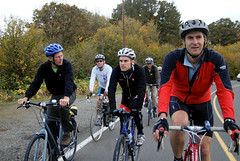
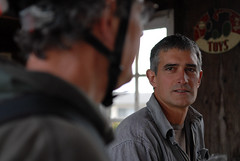
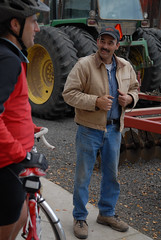
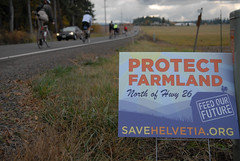

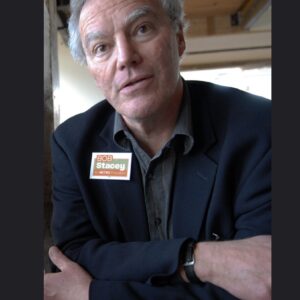
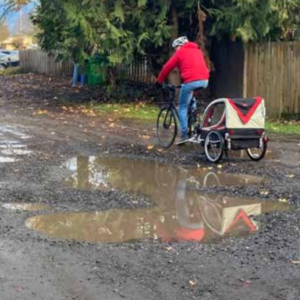
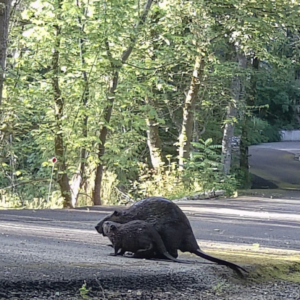
Thanks for reading.
BikePortland has served this community with independent community journalism since 2005. We rely on subscriptions from readers like you to survive. Your financial support is vital in keeping this valuable resource alive and well.
Please subscribe today to strengthen and expand our work.
For me, having rural areas so close is what makes Portland a desirable place to live. Not just because it’s nice to have a beautiful place to ride my bike, but because of the local farms. They provide amazing produce for our restaurants, bakeries, farmer’s markets and CSA’s. Because it’s local, it’s fresh and seasonal and doesn’t take tons of fossil fuels to ship. Other cities don’t have this advantage. It’s one of our strengths.
Help me out here… why is this an unlikely alliance?
So I went to try and make my opinion known to Metro, but their website says the public comment period ended on Oct. 15. Does that mean there’s no point in emailing, say, the Core 4 mentioned in the article?
fredlf,
yes, official public comment periods are over at this point.
AaronF,
i think they’re an unlikely alliance because of the usual urban/rural divide in Oregon and the extent that people that ride bikes are usually thought of as being urbanites.
also, some rural communities are not always so welcoming to people in spandex (think of the tack vandalism issues in Corbett).
I guess I always had cyclists pegged as generally anti sprawl.
I think it’s pretty common to have diverse stakeholders when a policy impacts a diverse spectrum of people.
fredlf #3
It is correct that public ORAL testimony is closed; however, Metro Council and the Core 4 are still accepting public WRITTEN testimony for the next month or so. If you want to comment on the reserves process or express your support for rural reserves north of Highway 26 (or for any other farmland), go to http://www.savehelvetia.org and submit your comments – there is a “submit testimony” button on the home page menu. Your comments will be sent to all elected officials involved in the reserves process. Also, after the Core 4 makes their final recommendation sometime at the end of the year or early January, they will hold another round of public comment opportunities. These hearings will be important to attend, particularly if there is still a lot of undesignated or urban reserves. Hope this answers your questions.
” “Once land is put into urban reserves, it’s starts a slippery slope.” Amabisca said speculative developers will quickly gobble up urban reserves land, with the expectation that it will turn a good investment when it can be sold for industrial use down the road. ” maus/bikeportland
I agree with those thoughts. It may be difficult to understand just how much land in the Tualitan-Willamette Valley has already been lost over the last 50 years to industrial, commercial and residential development.
Compounding the consequences of the loss is that the land lost has been used inefficiently in the construction of low level buildings with acre upon acre of accompanying surface level parking lots.
This is sprawl, plain and simple. Unless people get the word, loud and clear to “The “Core 4″ are Metro Councilor Kathryn Harrington, Chair of the Washington County Commission Tom Brian, Multnomah County Commissioner Jeff Cogen and Clackamas County Commissioner Charlotte Lehan.”, that this is wrong, it will be just that much harder to stop the expansion of sprawl.
As population growth continues in the area, the need for agricultural lands will grow, not lessen. Agricultural lands are a finite resource and their loss to development and fragmentation can not be reversed.
Continuing to protect our prime agricultural land that is close-in to urban markets is also an economic advantage that should not be ignored. Agriculture is a global marketplace and our ability to produce vegetables, fruits, meat and milk for our markets locally is an important competitive edge for our region as a whole.
These are just two of the a wide variety of reasons for protecting these agricultural lands.
Thank you to all the folks organizing this true grassroots effort to save a resource that serves us all.
I was happy to submit testimony via http://www.savehelvetia.org and strongly encourage others to do the same.
re: opportunities for public input.
the Reserves process includes a number of formal decisions over the next six months where the public can offer their thoughts and concerns. for more info go to oregonmetro.gov and search for reserves.
The “Core Four” will not make the decision, rather they are negotiating on behalf of the agencies they represent. actual decisions will be made by each agency separately with the requirement that we all agree. Metro adopts Urban Reserves, the Counties adopt Rural Reserves.
I also encourage people to also offer comments on the Regional Transportation Plan, as well. Same site.
I should probably note that we have not offered to open our property to a series of public on-road and off-road bike trails. We support a large route through all of Helvetia and surrounding areas and would offer a connection through our property. We are also willing to host an organized ride for the purpose of raising funds for the development of trails and other infrastructure that could be used to support farm commerce.
Everyone close to the process knows that Washington County’s proposal is ridiculous. Most developed land in Washington County is wasted already with oversized parking lots and single-story buildings.. why waste more high productivity farmland on low-density sprawl?
Thanks for the interesting article, and for the reminder to go post testimony at http://www.SaveHelvetia.org, which I just did!
farm to the future
patrick
I’m glad to see someone else has made the connection between farmland preservation and high quality bike riding. Here in the Garden State our farmland preservation efforts have saved some really sweet road rides from being overwhelmed with traffic and sprawl. Still the fight rages on.